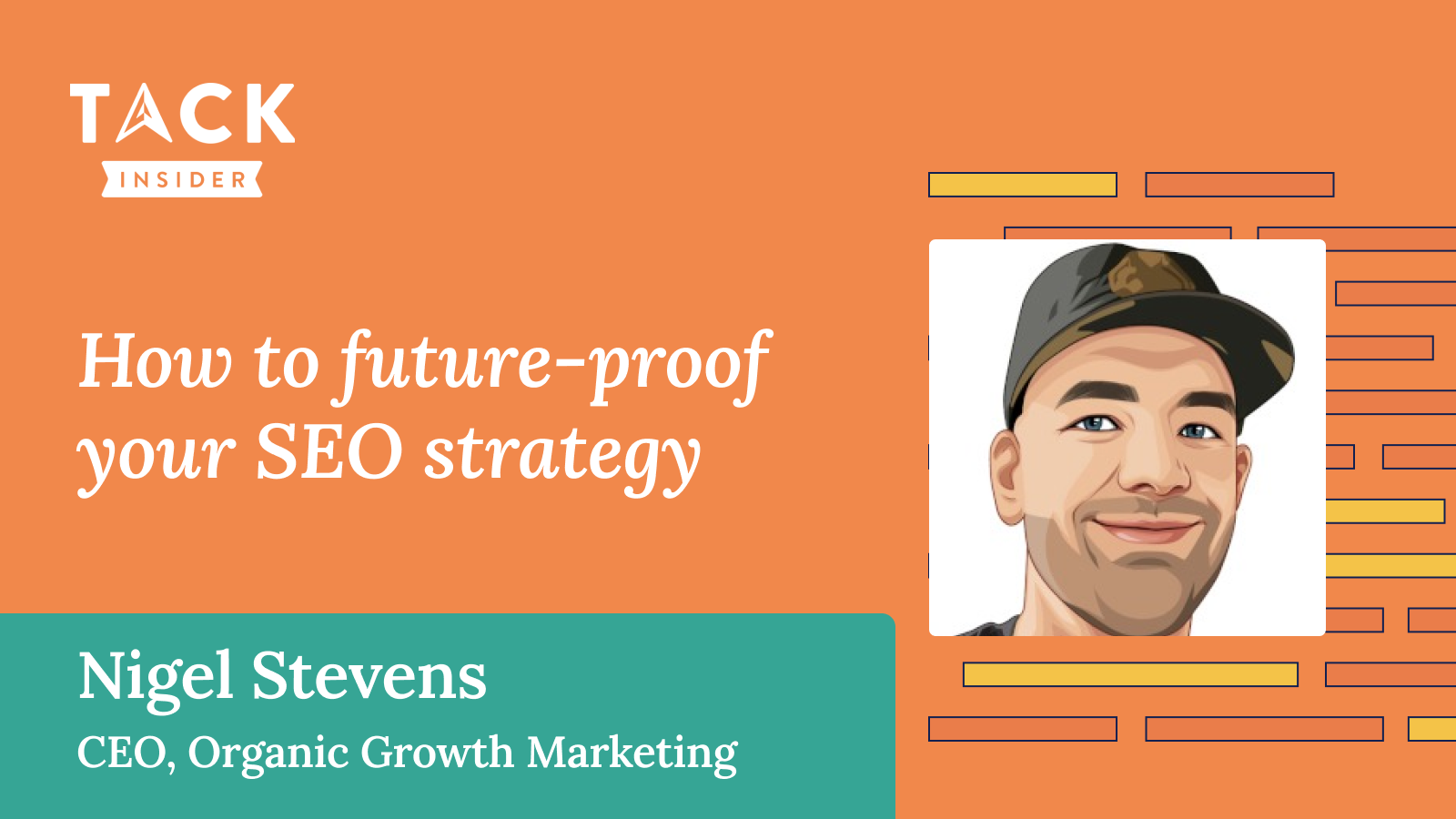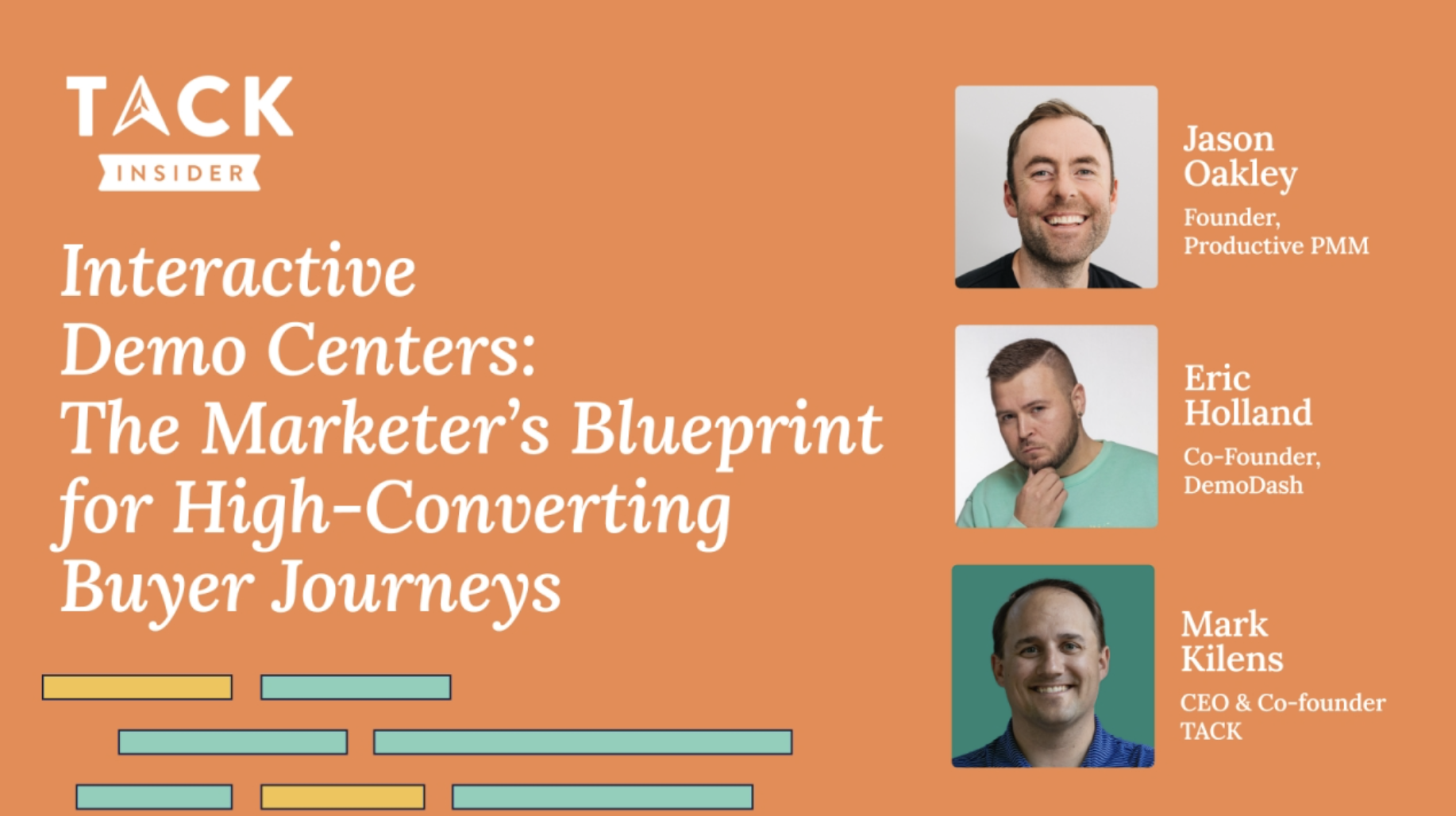Hosted by: Mark Kilens, CEO & Founder at TACK
Speakers: Nigel Stevens, CEO of OGM
Overview
Search has changed, and fast. From keyword-stuffing hacks to GenAI-powered snippets, SEO is no longer just about ranking pages. In this TACK Insider session, host Mark Kilens and guest Nigel Stevens, CEO of OGM and former SEO lead at BigCommerce, explored what’s broken in modern search and how B2B teams can adapt. The message was clear: optimizing for clicks isn’t enough anymore—attention, credibility, and content experience now determine success.
Whether you’re leading content at a growth-stage startup or running demand gen at an enterprise, here’s what you need to know, and do, about SEO’s shift in 2025.
Check out the full slides of the webinar
1. SEO is moving from smart robots to human attention
The history of SEO can be roughly divided into three eras:
- Google 1.0: You ranked by gaming the system—white-on-white text, keyword stuffing, and link spamming were fair game.
- Google 2.0: Algorithms matured, SERPs became richer, and content had to be better—but not necessarily human-centric.
- Google 3.0 (today): With AI overviews, shrinking CTRs, and attention-deficit audiences, ranking well now demands actual value and brand credibility.
Companies are still catching up. Many are stuck in outdated traffic-first mindsets while users are looking for speed, trust, and substance.
“Most SEO strategies are still optimized for impressions, not attention. But attention is the currency that’s getting more expensive.”
2. CTR is collapsing—and that’s not a glitch
Clicks from top-of-funnel keywords are declining sharply. Quick answers, AI summaries, and SERP distractions mean fewer users actually land on your site. Ranking first doesn’t guarantee traffic anymore, especially for low-intent searches.
Takeaways:
- Stop measuring SEO performance by volume alone.
- Focus on demand capture content that solves specific problems.
- Avoid generic TOFU pieces (e.g. “What is ARR?”) unless you can make them distinct and memorable.
3. Mature sites should expect (and accept) traffic declines
If you’ve already scaled SEO efforts over the past 5–10 years, don’t be surprised if overall traffic dips—even if you’re doing everything “right.” Ranking tools may show growth, but user behavior and CTRs tell a different story.
What’s happening:
- Rich results and paid placements are cannibalizing organic clicks.
- Google is experimenting more aggressively than ever with new formats.
- AI-generated content is flooding the index and forcing greater competition.
What to do:
- Segment traffic by intent, not just source.
- Prioritize pages with downstream business value, not just visibility.
- Evaluate success using conversion potential and engagement, not traffic alone.
4. The safest SEO bet? Product-led content
Pages that clearly show how your product solves a problem are holding up best. Why? Because AI overviews and featured snippets can’t replicate context-rich, deeply specific walkthroughs or use cases.
How to win:
- Build content around real user problems your product addresses.
- Show—not just tell—how you solve them (visuals matter).
- Design for the scroll test: users should understand your value before they read a single paragraph.
5. Video and multimedia content are rising
Gen Z’s influence on search is real. Google is pulling more short-form video and user-generated content into SERPs—sometimes even featuring TikTok videos in top positions.
Action steps:
- Add short videos to your top-performing articles.
- Repurpose videos across TikTok, YouTube, and your blog.
- Track impact on bounce rates, time on page, and conversion.
6. Brand is the ultimate SEO moat
In a world of infinite content, brand familiarity becomes the tie-breaker. Google is increasingly rewarding websites that have strong branded search volume, direct traffic, and credible links.
Brand signals that matter:
- People search for your name (hard to fake).
- Branded backlinks from reputable sites.
- Consistent engagement across channels, especially LinkedIn and YouTube.
7. Better UX = better rankings
Design is now a differentiator. If your content layout looks like every other SEO playbook, users will tune out—even if the writing is solid.
Try this:
- Rethink your blog template—break common patterns.
- Use toggles, visual guides, and scroll-triggered summaries.
- Design with curiosity and scannability in mind.
8. Generative AI won’t save you
AI-generated content is flooding the web—and failing. Google sees it as a threat, and users are increasingly skeptical. Unless you’re using GenAI to enhance proprietary data or structured outputs, the risks outweigh the rewards.
Use GenAI only when:
- Summarizing original, proprietary data.
- Automating structured content (e.g. product variants).
- Speeding up drafts that still go through rigorous human review.
9. You need a new SEO measurement model
Old metrics like traffic and first-touch conversions are losing relevance. You need to track engagement, intent signals, and brand interaction instead.
Upgrade your model:
- Track engaged sessions (set GA4 thresholds to 60 seconds).
- Define micro and macro conversions on key pages.
- Measure content impact with first-party data and qualitative feedback.
Key Takeaways
- SEO is no longer about ranking first—it’s about being remembered.
- Prioritize attention, not just impressions.
- Treat content as an extension of brand, not just traffic bait.
- Focus on product-problem fit, not keyword volume.
- Design, video, and brand trust are now core ranking signals.






